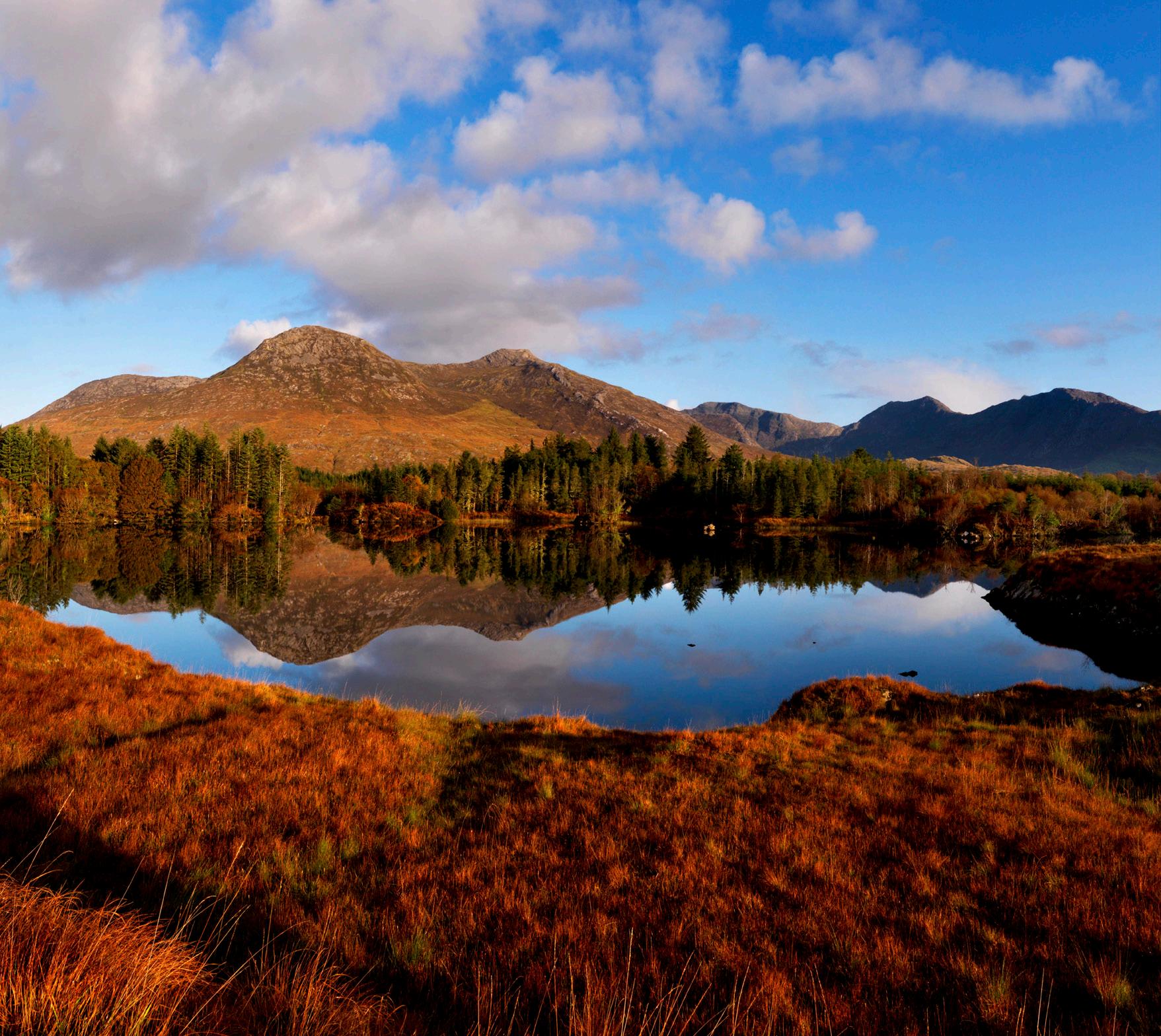Map of Fisheries







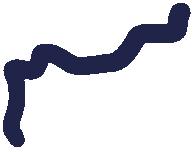





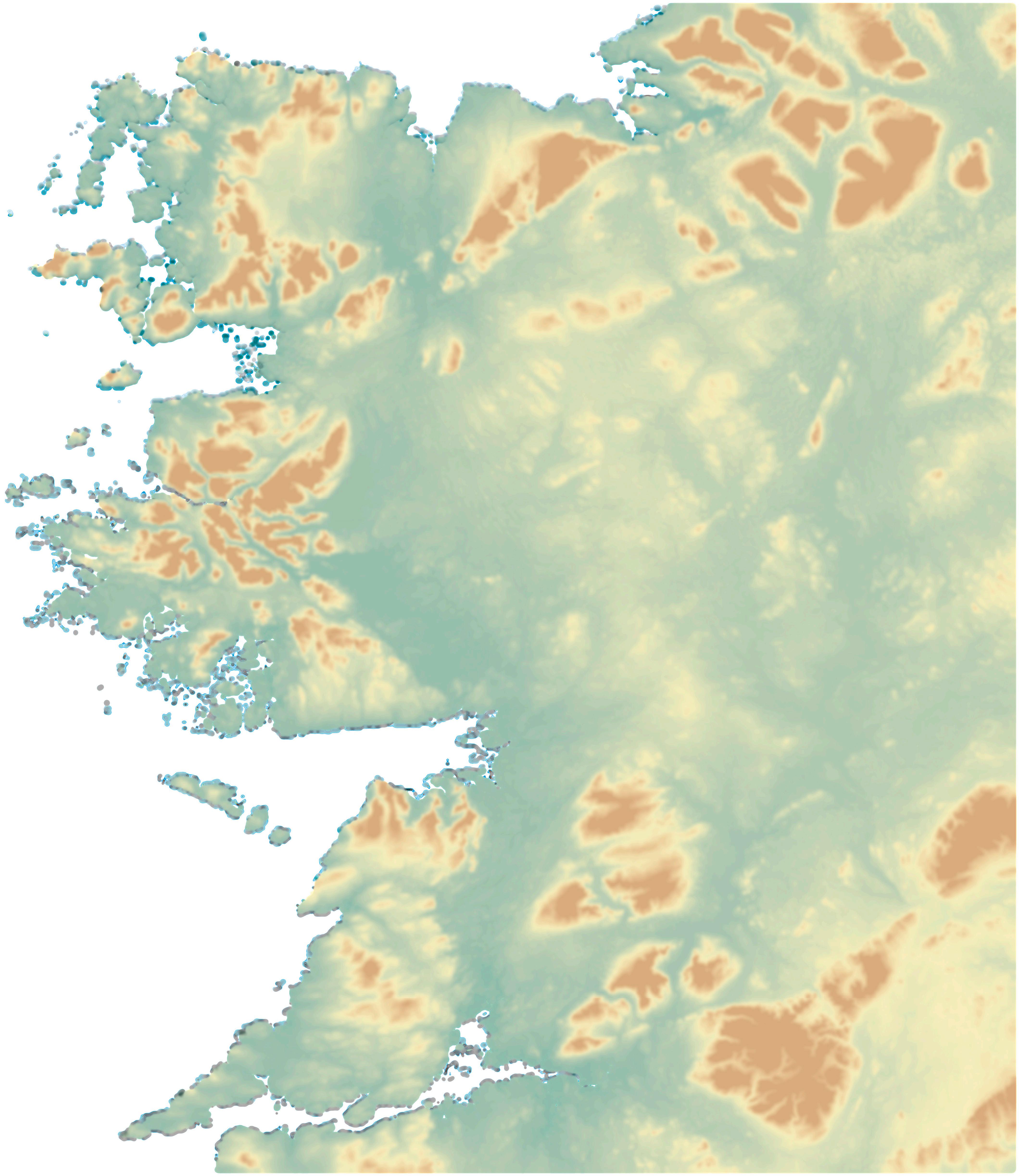
Oughterard Spiddal Galway Maam Cross Ballinrobe Clifden Cleggan Roundstone Leenane Cong 1 2 8 7 6 5 4 9 10 11 17 3 12 15 16 14 13 18 24 20
1 Lough Nafooey 12 2 Finny River 13 3 Culfin 14 4 Renvyle Lake 15 5 Kylemore 17 6 Ballinakill Loughs 18 7 Owenglin 19 8 Clifden Loughs 20 9 Doohulla Fishery 22 10 Ballinahinch 24 11 Lough Inagh 26 12 Screebe 29 13 Costello & Fermoyle 30 14 Owenboliska 32 15 Loughkip River & Lake 32 16 Owenriff River 33 17 Maam River 33
Map 1 (Page 10)
18 Lough Corrib 36 19 River Corrib 38 20 Cong River 41 21 Clare River 43 22 Abbert River 44 23 Grange River 45 24 Black River 45 25 Clarin River 46 26 Dunkellin River 46 27 Lough Rea 47 28 Gort River 47 29 Woodford River 48 30 Cappagh/Duniry-Kilcrow River 48 31 River Suck 49 32 Bunowen River 49 33 River Shiven 50 34 Island River 50
Map 2 (Page 34)



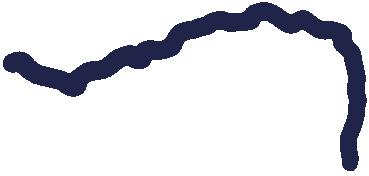
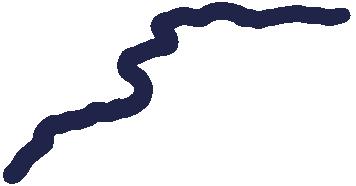


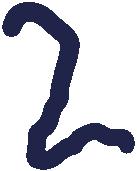






Galway Headford Ballinasloe Loughrea Woodford Portumna Kinvara Athenry Ballyforan Gort Tuam 19 21 22 23 33 32 31 30 29 27 28 25 26 34
The Region
County Galway is a very diverse landscape. North and East Galway is mainly a landscape of rolling hills and flat plains, with good agricultural land and some lowland raised bog. It is bordered on the northwest by the River Suck, and on the southwest by the majestic Lough Derg, one of the lakes on the mighty River Shannon.
To the west, Connemara is the region west of Lough Corrib, and is much more rugged, with the Twelve Bens mountain range and vast tracts of peat bog and rocky pasture. The land here is much poorer for agriculture, and sheep farming dominates. There is also a lot more water here, and it seems you cannot walk a mile without crossing another river or having to go around yet another lake. The myriad small lakes have prolific stocks of small wild brown trout, and nearly every stream that reaches the sea brings sea trout and even salmon upstream.
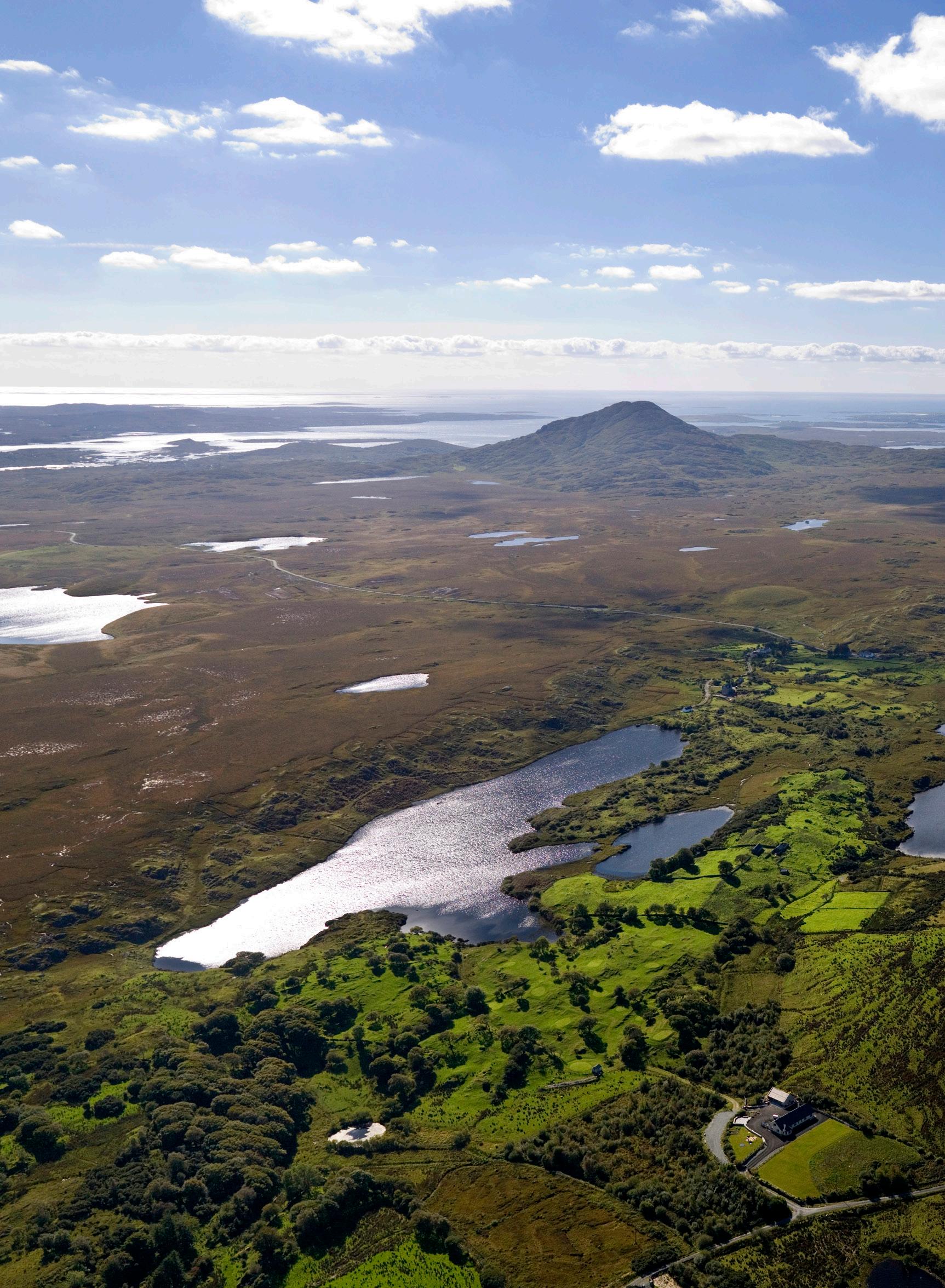
4
Species
There are 3 main game angling species present in the region – Atlantic salmon, sea trout and brown trout. Sea trout and brown trout are the same species in reality, sea trout are just brown trout that migrate to sea, but for angling and management purposes they are considered separate species. There is another species, the ferox trout, that is found in Lough Corrib and Lough Mask.

Atlantic salmon spend 2-4 years in freshwater as juvenile parr before migrating to sea. They return as adults between February and October usually, and the spring-returning fish tend to be larger fish that have spent at least 2 winters at sea (multi-sea-winter fish), averaging 7-15lbs (3.2 - 6.8kg). The fish coming back in summer average 4-6lbs (1.8 - 2.7kg), having spent one winter at sea, and are known as grilse.
Brown trout spend their whole lives in freshwater, with a typical lifespan of 5-6 years. In acid waters they do not grow very large, typically growing to 0.5lbs (.22kg).
Connemara 5
Tackle
There are 3 main methods used to target game fish (trout and salmon) in the area – fly fishing, spinning, and bait fishing. Fly fishing is the most common method, and many fisheries, especially in Connemara, are fly only.

For lake fishing a 10-11 foot rod, weighted for a #6-7 line, is the usual choice of most Irish anglers. The longer rod allows for bigger loops, essential when fishing a team of 3 flies. A softer rod also helps with the bigger loops.
For river fishing for salmon, very few of the rivers in the region are wide enough to require a long double-handed rod. With the exception of the Galway Fishery and the lower Cong River, most rivers can be covered perfectly adequately with a 10 foot single-handed #7-8 rod. For the larger rivers, a 12-13 foot double-handed #9-10 rod is perfect, and will allow a longer cast to cover the wider pools.
For trout fishing, a 9 foot #5-6 rod is fine for most situations. Some anglers will prefer a longer rod or lighter rod for nymph or dry fly fishing.
6
Regulations
Game angling regulations, especially in relation to salmon angling, can change from year to year, and it is the responsibility of anglers to familiarise themselves with the laws and regulations governing each fishery before fishing. Anglers can get up to date information on fishing regulations by contacting Inland Fisheries Ireland or by visiting www.fishinginireland.info
Licences and Logbooks
Anglers fishing for salmon or sea trout must be in possession of a valid State salmon licence and must have it on their person at all times while fishing. Licences are available from most tackle shops, many fishery owners, or online at https://store.fishinginireland.info/. A logbook is issued with the licence as well as a number of blue gill tags, and the angler must be in possession of these while fishing. All salmon and sea trout over 40cm which are killed must be tagged immediately with a blue gill tag, and the details recorded in the logbook. Additional tagging requirements may apply in some fisheries.
Permits
Many fisheries that are in private ownership or managed by a club or the State require a permit to fish. These are usually available from the fishery owner, or a local tackle shop. Whether or not a permit is required, private property should be respected at all times and only recognised access points to a fishery should be used.
Catch & Release Fisheries
Some rivers are open on a “Catch & Release” basis only, as a conservation measure. These may change from year to year, and this should be checked on www.fishinginireland.info Where Catch & Release applies, worm fishing may be prohibited, and single barbless hooks may have to be used. This also applies to anglers who have retained their daily or yearly bag limit of salmon and wish to continue fishing.
To ensure fish survive, they should be played firmly and landed as quickly as possible to avoid tiring the fish. The fish should then be handled in a gentle manner and promptly returned to the water unharmed, keeping the fish in the water if possible while unhooking it. A net with knotless mesh is important.
Closed Fisheries
Some fisheries may be closed for salmon fishing as a conservation measure, in order to protect reduced fish stocks in that catchment. Salmon fishing is strictly prohibited in those fisheries. For an up to date list of open, closed and catch-and-release fisheries, please contact Inland Fisheries Ireland or check www.fishinginireland.info
7
Safety
Angling is a water based activity with changing conditions and dangers that are sometimes hidden. Drowning is an ever present risk and you should exercise utmost care for your own safety and that of angling partners/buddies.
Please remember the following when going fishing:
• Wear a life jacket.
• Follow advice on warning signs, permits and notices
• Don’t take any risks when wading or fishing from boat, shore or bank
• Check the weather forecast and tide tables before you go
• Take time to observe weather, water and tide conditions while fishing
• Fish with a partner/buddy or let someone know where you’re going
• Take a fully charged mobile phone in a waterproof case/bag.
• Wear appropriate clothing and footwear
For a more detailed guide to safety when angling please visit: www.fishinginireland.info/safety.htm
Leave No Trace
Please adhere to the seven principles of Leave No Trace Ireland: Plan ahead and prepare; Travel and camp on durable surfaces; Dispose of waste properly; Leave what you find; Minimise campfire impacts (be careful with fire); Respect wildlife; Be considerate of other visitors.
Vehicles should be parked in designated areas and in such a manner that they do not cause obstruction.
Anglers should fish responsibly and sustainably – where possible use single barbless hooks and practice no-weight, “in the water” catch and release.
www.leavenotraceireland.org/
Biosecurity
Aquatic Invasive Species and fish pathogens are readily transferred from one watercourse to another on angling tackle, boats and protective clothing. These can be very damaging to resident fish stocks, the aquatic habitat and the general environment. We would ask that all anglers inspect and clean their gear prior to travelling to Ireland to fish.
Full information on prevention of invasive species is available on our website at: www.fisheriesireland.ie/Research/invasive-species.html
Or via Invasive Species Ireland at http://invasivespeciesireland.com/cops/water-users/anglers/
2014 8
Disclaimer
Every effort has been taken to ensure accuracy in the compilation of this publication and associated maps and web pages. Inland Fisheries Ireland cannot accept responsibility for errors or omissions therein. Some sporting activities may by their nature be hazardous and involve risk. It is recommended in such cases to take out personal accident insurance. While many operators would have public liability insurance it is always advisable to check with the establishment or operator concerned as to the level of cover carried.

Corrib Trout 9
Map 1





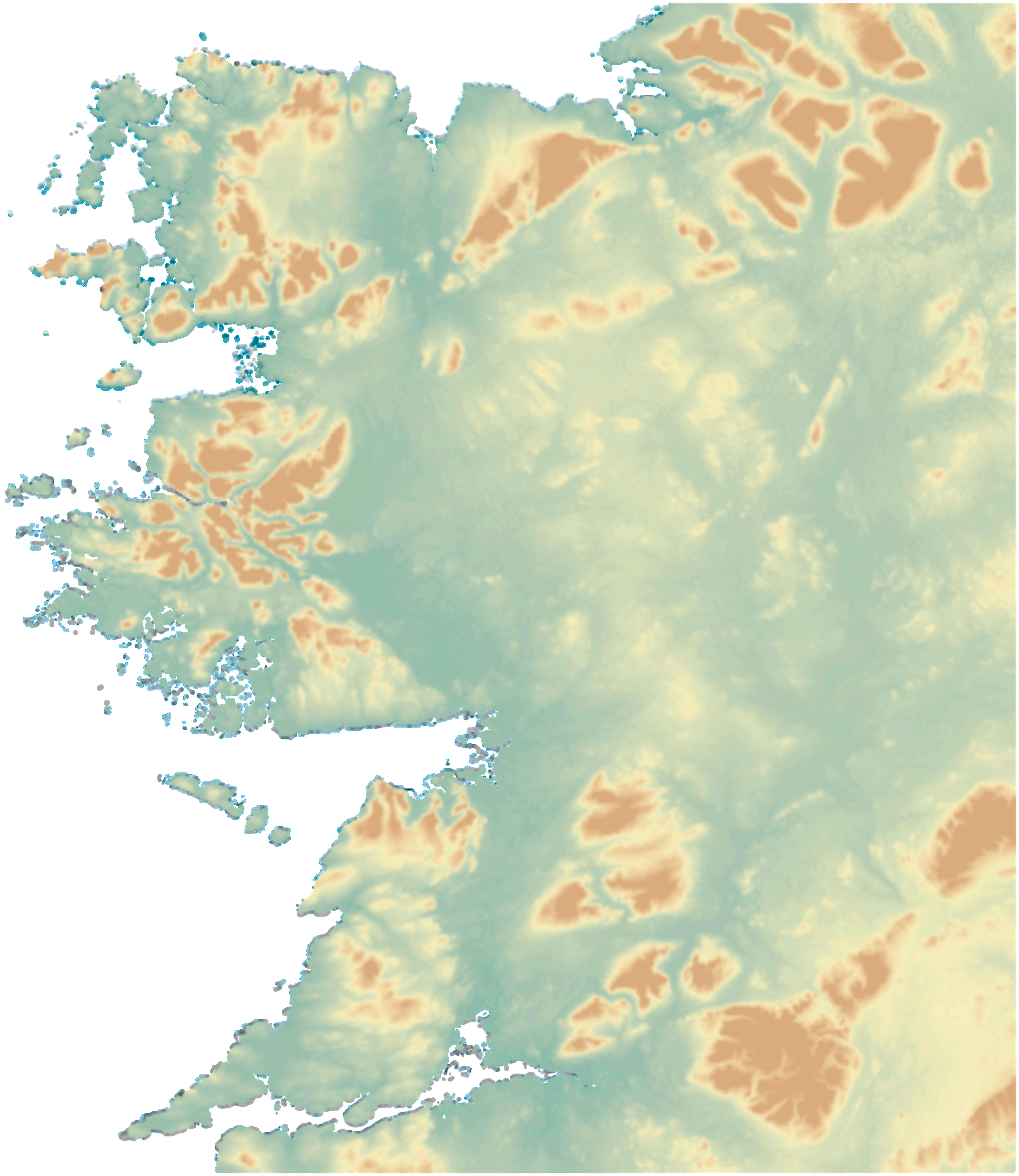
Clifden Cleggan Roundstone Leenane 8 7 6 5 4 9 10 11 3 Culn Renvyle Lake Kylemore Doohulla Ballynakill Loughs Owenglin R. Clifden Loughs Ballynahinch L. Inagh
1 Lough Nafooey 12 2 Finny River 13 3 Culfin 14 4 Renvyle Lake 15 5 Kylemore 17 6 Ballinakill Loughs 18 7 Owenglin 19 8 Clifden Loughs 20 9 Doohulla Fishery 22 10 Ballinahinch 24 11 Lough Inagh 26 12 Screebe 29 13 Costello & Fermoyle 30 14 Owenboliska 32 15 Loughkip River & Lake 32 16 Owenriff River 33 17 Maam River 33 10

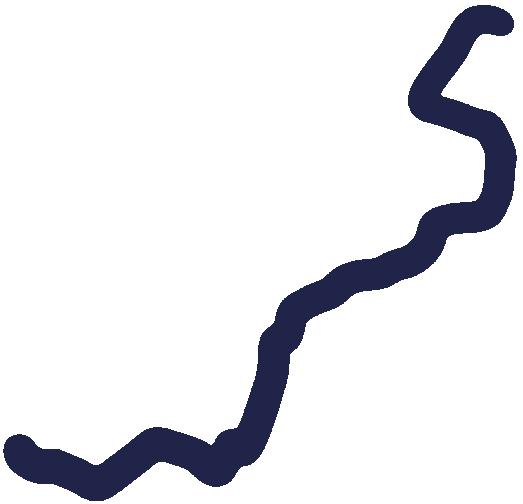


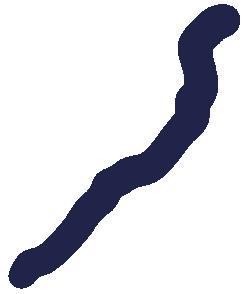
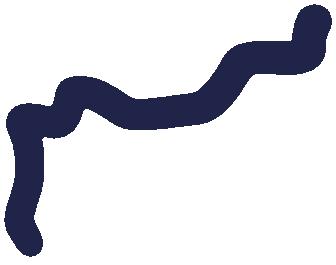
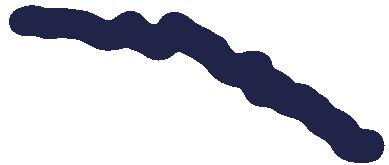





Oughterard Spiddal Galway Headford Maam Cross Ballinrobe Cong 1 2 17 12 15 16 14 13 L. Nafooey
R. L. Corrib Inagh Screebe
& Fermoyle
Corrib Black R. Cong R. LoughkipR.
Maam
Costello
Owenboliska
R. 11
Owenri
Species & Season Brown Trout: March 1st to September 30th

Methods & Regulations
Size Limit: 13 inches (33cm)
Daily bag limit of 4 trout per angler per day
Permission Lough Nafooey is a State lake and no permit is required
Fishery Description
Lough Nafooey, on the border between Galway and Mayo, is a large lake in the hills upstream of Lough Mask, near Finney. The lough is almost 4km long by nearly half a kilometre wide, situated on an east-west axis, and consequently fishes best in a westerly wind. The lake gets a large run of trout from L. Mask on summer floods, and also has a stock of resident trout, averaging less than a pound. The best fishing is in late summer when trout are moving upstream. There is a sandy beach at the western end, which serves as a launching point for boats (please observe biosecurity precautions).
1 Lough Nafooey
12
Lough Nafooey
2 Finny River
Species & Season
Methods & Regulations
Permission
Fishery Description
Brown Trout: March 1st to August 31st
Size Limits: 13 inches (33cm)
Daily bag limit of 4 trout per angler per day
Fishing is generally regarded as free, landowner permission should be requested for parking and access through private land.
The Finny River is a short (3km) stretch of river connecting Lough Mask to Lough Nafooey, that forms the border between counties Galway and Mayo for its entire length. The river flows through moorland and rough pasture, and access is relatively easy. There is a small stock of resident trout, although it gets a large run of trout from Lough Mask on their way upstream on summer floods. Fishing is best in late summer (July-August), and nymphing and wet fly are most effective. As the river is a spawning and nursery habitat, catch and release is encouraged, and fishing is not permitted in September.

13
Finny River
3 Culfin
Species & Season
Methods & Regulations
Permission
Fishery Description
Salmon: February 1st to September 30th
Sea Trout: June 1st to September 30th
Brown Trout: February 15th to October 12th
Flyfishing and spinning (barbless hooks only)
Mr. B. Ormsby.
Tel. +353 (0)95 43997 www.culfin.com
The Culfin Fishery comprises of two large loughs – Lough Muck and Lough Fee – and the Culfin River which flows to the sea at the northern end of Lettergesh Beach. The river is very narrow and not really fished, most fishing is concentrated on the two lakes. The lower lake, Lough Muck, is the first stop on the system for salmon and sea trout, and can produce good grilse fishing from July onwards. There is only a short run upstream to Lough Fee, which allows good access for fish to move on up in high water, and Fee can also produce good fishing, although fish can be more spread out. Both lakes have a good stock of small wild brown trout also.

Fishing is controlled by the Culfin Fishery, and the Culfin Anglers club, which leases part of the upper lough from Kylemore Abbey. Fly fishing is most successful, but spinning with barbless hooks is also allowed. Bait fishing is not permitted. There is one boat available on each lough. Bank fishing is popular on both lakes, with the eastern shore of Lough Muck particularly productive.
Check www.fishinginireland.info for current regulations. At the time of writing, the fishery is open for 2021.
14
Culfin
4 Renvyle Lake
Season February 15th to October 12th
Methods & Regulations Regulations as per permit
Renvyle House Hotel, Renvyle, Connemara, Co. Galway, H91 X8Y8
Permission
Tel. +353 (0)95 46100
Email: info@renvyle.com
Web: www.renvyle.com
Fishery Description
Renvyle Lough is a small put-and-take fishery situated in the grounds of Renvyle House Hotel. The lake is stocked with rainbow trout and provides good sport for fly anglers. Boats and permits available from the hotel.

15

Kylemore 16
5 Kylemore
Species & Season
Methods & Regulations
Permission
Fishery Description
Salmon: February 1st to September 30th
Sea Trout: June 1st to September 30th
Brown Trout: February 15th to October 12th
Flyfishing only
Kylemore Abbey, Letterfrack, Co. Galway

Tel. +353 (0)95 41156
Kylemore House: Tel. +353 (0)95 41143 or +353 (0)87 2057291
Email: kylemorehousefishery@gmail.com
The Kylemore Fishery comprises of three lakes – Kylemore Lough, Pollacappul Lough Upper (known as the Middle Lake) and Pollacappul Lough Lower (known as the Castle Lake), and the River Dawros, which drains these lakes to the sea at Ballinakill Bay. Much of Kylemore Lough is controlled by Kylemore House, situated on the shores of the lough, with boats and permits available. The rest of the lake, the two lower lakes and the river are controlled by Kylemore Abbey Fishery. Boats and permits are available. The Dawros River is a short intimate river approx. 4km long, which flows through a mix of native woodland, scrub and rough pasture. It is a small river and a single-handed rod is sufficient for most of the pools, although a double hander or switch rod may come in handy on one or two. The river is split into 4 beats, with 8 rods available.
The fishery gets a run of spring salmon from April, with the grilse entering in July, and given sufficient water, the river can fish very well. Sea trout start running in June, and the run can be very prolific, particularly in years when nearby salmon farms are fallow. The sea trout average 0.5-1lb, with some running to over 3lbs.
From July onwards is the best time to fish the lakes, and they can fish well right through to the end of September. The usual lough-style tactics apply, concentrating on shallows and shorelines for salmon, and slightly deeper water for sea trout. The top end of Kylemore Lough, as well as the northern shoreline, provides the best lies for salmon, and indeed permits for shore angling are available from Kylemore House, so a boat is not necessary, but does provide better access to fishing. The southeastern end of the Middle Lakes holds a lot of sea trout, especially along the reed beds. Castle Lake holds sea trout around most of the lake, and boats can travel under the road bridge to the Middle Lake to fish both. There is no boat access between Middle Lake and Kylemore Lough.
17
6 Ballinakill Loughs
Species & Season Brown Trout: February 15th to October 12th

Methods & Regulations
All legal methods
Permission See below
Fishery Description
There are a number of loughs in this area, many of which provide good sport for mostly small trout.
Garraunbaun
This lough, in Moyard, has a good stock of trout averaging 0.5lbs, with some up to 1lb. Bank fishing only, with the best fishing on the north shore. Access through private land is by landowner permission.
Ballinakill
One of the largest loughs in the area, and has a prolific stock of trout averaging 0.5lbs, with some fish up to 2lbs. A shallow lough with weed growth restricting fishing from July onwards. Bank fishing not allowed. Can be hit or miss but when it’s fishing well it can be excellent.
Boat hire from Patrick O’Toole, Cartron, Moyard. Tel. +353 (0)95 41080
Anillaun
This small lough just east of the beach at Cleggan holds a stock of brown trout and gets a run of sea trout. Bank fishing only.
Permission: Hugh Musgrave, Cleggan Farm, Cleggan. Tel. +353 (0)95 44658
18
7 Owenglin
Species & Season
Methods & Regulations
Permission
Fishery Description
Salmon:
February 1st to September 30th
Sea Trout: June 1st to September 30th
Brown Trout: February 15th to October 12th

All legal methods
Permits from Clifden Angling Association, available from John Stanley, Stanley’s Shop, Clifden. A salmon licence is also required.
Tel. +353 (0)95 21039
The Owenglin River flows into the sea at Clifden, and drains a large area of mountain and bogland to the east of here. The river offers fishing over approximately 10km of spate river, with salmon entering in June and July, and sea trout running from July onwards. Being a spate river, the best fishing is on a flood and as water is dropping back. Access in the lower stretches is relatively easy, if undeveloped. Check www.fishinginireland.info for current regulations. At the time of writing, the river is open on a catch and release basis.
19
8 Clifden Loughs
Species & Season
Methods & Regulations
Permission
Fishery Description
Salmon: February 1st to September 30th
Sea Trout: June 1st to September 30th
Brown Trout: February 15th to October 12th
Size Limits (trout): 9 inches (22.8cm)
Permits and maps from Clifden Angling Association are available from John Stanley, Stanley’s Tackle Shop, Clifden. Tel. +353 (0)95 21039
There are a large number of lakes in the Clifden area, many controlled by the Clifden Anglers Association. Some of these are quite remote, and difficult to access, but several are easy to access and even have boats on them. All have stocks of wild brown trout, generally small, but there are larger fish in some, and nearly all are free-rising and provide good fishing. Popular flies for these loughs include Claret Bumble, Green Peter, Butcher, Daddy Long Legs, Peter Ross, Claret Dabbler, Bibio. Some of the main fisheries are listed below, for details on the rest see Clifden Anglers contact details.
Derrylea is stocked annually, has a boat and holds a lot of fish 2-3lbs with some bigger fish. Just off the main N59 Clifden-Galway road, it’s a great place to introduce kids to fishing.
Gowlane: Beside Derrylea. Also stocked. Has a boat. Fish averaging 1lb, some bigger fish. Free rising.
Aughrusbeg: Formerly one of the best known trout loughs in the area, with brown trout to 5lbs, rudd were introduced to the lake in recent decades and trout stocks have declined. May still hold some good fish.
Courhoor Lough: A small lough about 3km south of Cleggan with a good stock of small trout, but some to half a pound and a few bigger. Fishing is from the bank only, with the easiest access along the east and north sides, where a track allows closest approach.
Lough Auna: This is a large enough lake, over 1km long, situated about 3km northeast of Clifden and approached via a big road off the N59 Clifden-Letterfrack road. There is a nice stock of trout, 3 to a pound, and fishing can be very good. A boat is available.
Lough Nambrakkeagh: One of the best-known lakes in the area, Nambrakkeagh holds some very good trout to over 2lbs, with the average weight under 1lb. Situated 2km east of Clifden, take the road signposted for Waterloo Lodge but continue straight instead of the lodge access. Approx. 2km up his road is a track on the left into the hills. If the gate is open you can drive all the way to the lake, otherwise park and hike the remaining few hundred metres up the track. Bank fishing only.
20
Lough Nahillion: A picturesque lough, high in the hills northeast of Clifden, Nahillion is a relatively large but shallow lake that has a large stock of small trout and fishes well throughout the season. The fish average 3 to a pound. Difficult to access as the bog walk is very soft, but once you reach the lake the fishing is easier.
Island Lough: One of the better loughs in the area, south of the N59 Galway-Clifden road, Island Lough holds a good stock of brown trout averaging 3 to a pound. Fishing is best from May onwards, and a west/SW wind is suitable. Bank fishing only.
Lough Fada: As the Irish name suggests, this is a long, narrow lake about 5km south of Clifden. There are lots of bays, island and points, and there is a good stock of trout averaging 0.5lbs, with the occasional fish to 3lbs. You can drive a bog road all the way to the northern shore of the lough, and the banks are fishable all the way around. A boat is available.
Lough Anaserd: Anaserd is situated 1.5km west of Ballyconneely, and is a substantial lough – over 80 hectares (82.2 acres) in size. Best fished along the south shore, it holds a good stock of trout averaging 0.5lbs, with many up to 1.5lbs. Fishing is good to wet fly throughout the season.
There are numerous other trout loughs in this area, far too many to describe here.

21
Species & Season
Methods & Regulations
Permission
Fishery Description
Salmon: February 1st to September 30th
Sea Trout: June 1st to September 30th
Brown Trout: February 15th to October 12th
All legal methods, fishery rules apply.
Nicholas Tinne
Emlaghmore Lodge, Ballyconneely, Connemara, County Galway, Ireland

Tel: +353 (0) 95 23529
Email: ntinne@eircom.net
This fishery is located north of the Roundstone-Ballyconneely road, about 4km from Ballyconneely. Formerly a good sea trout fishery, it along with much of Connemara suffered greatly from the sea trout collapse of the 1980s/90s and is now better known for brown trout fishing. There are a number of loughs, including Maumeen, Emlaghkeeragh, Barrowen, Carrick, Aturtaun, Bollard and Nalowney. These loughs are all connected by small rivers, and hold good stocks of trout averaging 0.5lbs, with some bigger fish. The lower loughs – Maumeen, Barrowen and Emlaghleeragh get a run of sea trout from July, with the very occasional salmon.
9 Doohulla Fishery
22

Roundstone Bog 23
10 Ballinahinch
Species & Season
Methods & Regulations
Permission
Fishery Description
Salmon: February 1st to September 30th
Sea Trout: June 1st to September 30th
Brown Trout: February 1st to October 12th
Flyfishing only
Ballynahinch Castle, Ballynahinch, Connemara, Co. Galway

Tel: +353 (0)95 31006
Web: www.ballynahinch-castle.com
The Ballynahinch system is one of the largest and most complex catchments in Connemara, with many lakes and short connecting rivers providing a multitude of fishing opportunities. The system gets spring salmon from April, with grilse running from June. It previously had a very prolific sea trout run, and in some years now still gets a very good run, but these days most are finnock and when the salmon farms in the bay are in full swing the run can be badly affected.
The first fishery on the system upstream from the sea is Ballynahinch Castle, which has a number of beats on the Owenmore River. The fishing here is easily accessible, with fishing piers and paths providing easy access. Fishing for salmon can be reasonably good throughout the season provided water levels are good. Sea trout fishing peaks in July, with very good evening fishing on the river, when most anglers have headed off for dinner. Most of the lakes upstream are privately owned and little fished, except for Lough Inagh.
24

Ballynahinch 25
11 Lough Inagh

Species & Season
Methods & Regulations
Permission
Fishery Description
Salmon:
February 1st to September 30th
Sea Trout: June 1st to September 30th
Brown Trout: February 1st to October 12th
Flyfishing only
Lough Inagh Lodge Hotel
Tel: +353 (0)95 34706
Web: www.loughinaghlodgehotel.ie
Lough Inagh Lodge Hotel controls fishing on Lough Inagh and Derryclare Lough and the short river connecting them, as well as Greenpoint Beat on the river downstream of Derryclare. This is the main fishery on the Ballynahinch system upstream, and provides good salmon and sea trout fishing from May onwards. Salmon move upstream on floods from May, with sea trout running in numbers from July, and the main lake can provide excellent fishing right to the end of the season. Greenpoint, Derryclare Butts and Corloo are famous pools on the connecting rivers that produce a lot of fish, while anglers on Lough Inagh tend to concentrate on the northern end, but depending on wind direction fish can be found along most shorelines. Lough Inagh also has a good stock of brown trout averaging 0.5lbs, but with some fish up to 12lbs, believed to be ferox or sea trout that have stayed on in freshwater. There are also a few Arctic char caught every year.
26

Pine Island, Derryclare Lough 27

28
12 Screebe
Species & Season
Methods & Regulations
Permission
Fishery Description
Salmon: February 1st to September 30th
Sea Trout: June 1st to September 30th
Brown Trout: February 1st to October 12th
Flyfishing only
Screebe House, Camus, Co. Galway
Tel. +353 (0)91 574110
Web: www.screebe.com
(Arderry, Shindilla Lr., part Shindilla Upper)
Currarevagh House, Glann Road, Oughterard, Co. Galway
Tel. +353 (0)91 552312
The Screebe Fishery is situated in south Connemara, approximately halfway between Ros an Mhíl and Cill Chiaráin. It consists of a number of interconnected loughs draining into the sea at Camus Bay, and reaching all the way up to the lakes around Maam Cross. The main lough, Screebe Lough is also known as Lough Ahalia, and the Irish name refers to the saline influence, as spring tides push up into the lake, which gives migratory fish an easy run from the sea. Screebe Lough has a very good stock of brown trout averaging 0.5lbs, with many larger fish. Wetfly fishing can be very productive, and there are fish up to 5lbs caught in most years. The system gets a run of sea trout in July, and a small run of salmon as well. The head of the lough, where the inflowing river enters, is known as the Salmon Pool and can provide good fishing for salmon in high water.
The loughs further up the system, including Knockaunawaddy, Cornageeha, Cornaree, Ashleam, Arderry and Upper and Lower Shindilla provide fishing for brown trout and a few sea trout. Arderry, Lower Shindilla and part of Upper Shindilla are controlled by Currarevagh House, with the rest controlled by Screebe House.

Screebe 29
13 Costello & Fermoyle
Species & Season
Methods & Regulations
Permission
Fishery Description
Salmon: February 1st to September 30th
Sea Trout: June 1st to September 30th
Brown Trout: February 1st to October 12th
Flyfishing only
Costello & Fermoyle Fishery control the fishing rights on most of the system, and permits, boats and ghillies must be booked through the fishery manager, Brian Curran.

Tel. +353 (0)91 572196
Email: curranb52@gmail.com
Website: irelandwestangling.ie
The Costello & Fermoyle Fishery is one of the crown jewels of Connemara, made famous in the early 20th century by the writing of TC Kingsmill Moore, a High Court judge who spent his summers fishing at Costello, and wrote “A Man May Fish” based on his experiences. The book was described by Hugh Falkus as the greatest book on sea trout fishing and one of his top 20 angling books. Kingsmill Moore was also a fly tier and developed many new patterns at Costello, including his famous ‘Bumbles’. The fishery itself comprises the Casla River, and a number of important lakes upstream. A few spring salmon start entering in April, but it is as a grilse and sea trout fishery that it is best known, and the best fishing is from July to the end of September. Most of the sea trout are finnock, but there are usually a good number of fish to 2 or 3lbs among them.
30
Casla River: The river itself is approx. 4km long, and split into 4 beats. Fishing is best after a spate, when the lakes have been topped up and run off slowly over a number of days. The river flows through relatively unspoilt bog, and provides wonderfully scenic fishing, with a nice mix of deep pools, shallow runs and myriad small pots where a fish might lie. Stealth and rivercraft is important here, and a double taper fly line is recommended for fishing.
Glenicmurrin Lough: The first lake on the system upstream from the sea is Glenicmurrin, a large lake with many bays and rocky shallows. There are boats available, with ghillies if required. The lake provides good sea trout fishing and can be fished in any wind. Fishing is good from when the sea trout start running right through to the end of September.
Lough Fermoyle: Fermoyle is a small lough where a lot of salmon and sea trout hold, waiting for water to move further upstream. The inflowing stream, known as the Butts, is a very good lie for salmon. The lake itself holds salmon around the points, while sea trout lie along the western shore and the island, although they can be found along most shores. A boat and ghillie is available.
Clogher Lough: Clogher is one of the uppermost loughs on the system, which requires a good walk from the car. It gets a lot of sea trout and some salmon late in the season, especially in a wet summer, and can provide very good fishing then.
There are a number of other loughs on the system, including the Schoolhouse Loughs, Rusheen Lough, and others, they are mostly small and hold brown trout and sea trout. Details and permits available from the fishery manager.

Glenicmurrin Lough 31
14 Owenboliska
Species & Season
Methods & Regulations
Permission
Fishery Description
Salmon:
February 1st to September 30th
Sea Trout: June 1st to September 30th
Brown Trout: March 1st to September 30th
All legal methods.
Currently closed for fishing. For permission contact Brian Curran Tel. +353 (0)87 2509722
Email: curranb52@gmail.com
The Owenboliska River drains a large area of mostly forested upland and bog and flows into the sea at Spiddal. Due to the heavy afforestation, the stocks of migratory fish have suffered, and the river is now closed for salmon fishing. Sea trout stocks are also impacted.
The river itself flows from Boliska Lough to the sea, a distance of approx. 5km. The river contains a number of holding pools
15
Species & Season
Methods & Regulations
Permission
Fishery Description
Salmon: February 1st to September 30th
Brown Trout: March 1st to September 30th
Size Limits: Brown Trout: 13 inches (33 cm). Catch limit of 4 trout per angler per day, including only one fish over 10lbs (4.5kg).
Fishing is regarded as free. Landowner permission recommended.
This is a small river draining an upland catchment and flowing into Ballyquirke Lough, then on to Lough Corrib. It holds a stock of small trout and is suitable for nymphing. Very occasional salmon may run the river to spawn, but it is not regarded as a fishery.
Lough Kip
This lough, which drains into the Loughkip River, is reached at the end of a bog road off the Moycullen-Barna road. It has a good stock of small brown trout. It fishes well from April onwards, and fishing is from the shore only.
Loughkip River & Lake
32
16 Owenriff River
Species & Season
Methods & Regulations
Permission
Fishery Description
Salmon: February 1st to September 30th
Brown Trout: March 1st to September 30th
Size Limits: Brown Trout: 13 inches (33 cm). Catch limit of 4 trout per angler per day, including only one fish over 10lbs (4.5kg).
The river up to the top bridge on the N59 road at the church is free fishing. Upstream of here permission is required, but ownership is unclear. Landowner permission should always be requested.
The Owenriff drains a large catchment to the west of Lough Corrib, and flows through the village of Oughterard where it flows into Corrib. There are a number of loughs on the system, including Agraffard , Leadmine, Acogga, Lettercraffoe and Boffin. Most of the lakes are privately owned.
The river gets a run of salmon and trout from June onwards on every flood, and there is free fishing from the village downstream to Lough Corrib. Upstream most of the river is in private ownership.
In recent years pike have been introduced to the lakes upstream and the stocks of trout and salmon have been impacted. Currently anglers are requested to practise catchand-release on the Owenriff to protect the stocks of salmonid fish.
17 Maam River
Species & Season
Salmon: February 1st to September 30th
Brown Trout: March 1st to September 30th
Fly fishing only in September
Methods & Regulations
Permission
Fishery Description
Size Limits: Brown Trout: 13 inches (33 cm). Catch limit of 4 trout per angler per day, including only one fish over 10lbs (4.5kg).
Fishing is regarded as free, landowner permission recommended.
This is a spaty spawning tributary of Lough Corrib, situated at the northwestern end of the lough and draining the Maam Valley into the lake just downstream of Maam village. Also known as Joyce’s River, there are two main tributaries, the Failmore and the Bealbnabrack. The river flows through rough pasture and bogland, and requires a flood to fish well. As a lot of trout and salmon move into the river late in the season prior to spawning, anglers are encouraged to practise catch-and-release on this river. Fishing in September is fly only.
33












Oughterard Spiddal Galway Headford Maam Cross Kinvara Ballinrobe Leenane Cong 18 19 21 24 20 L. Nafooey Culn Maam R. L. Corrib Ballynahinch L. Inagh Screebe Costello & Fermoyle Owenboliska Corrib R. Clare R. Black
Cong R. LoughkipR. Owenri R.
18 Lough Corrib 36 19 River Corrib 38 20 Cong River 41 21 Clare River 43 22 Abbert River 44 23 Grange River 45 24 Black River 45 25 Clarin River 46 26 Dunkellin River 46 27 Lough Rea 47 28 Gort River 47 29 Woodford River 48 30 Cappagh/Duniry-Kilcrow River 48 31 River Suck 49 32 Bunowen River 49 33 River Shiven 50 34 Island River 50 34
R.
Map 2


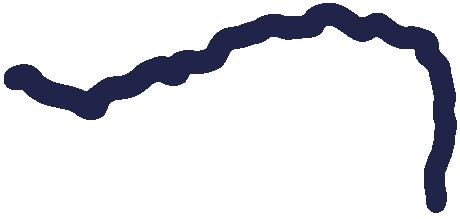
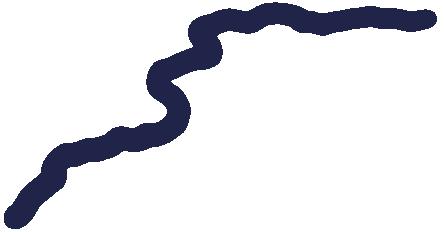



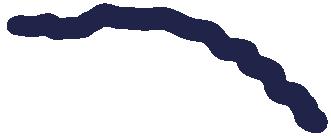
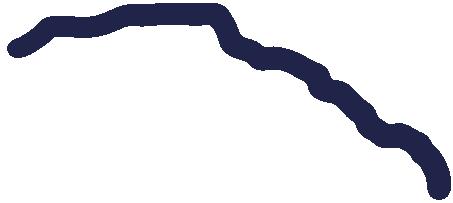




Ballinasloe Loughrea Woodford Portumna Kinvara Athenry Ballyforan Gort Tuam 22 23 33 32 31 30 29 27 28 25 26 34 Abbert R. Clarin R. Dunkellin R. Woodford R. R. Suck R. Shiven Bunowen R. Island R. Gort R. Cappagh/Duniry-Kilcrow R. Lough Rea Grange R. 35
18 Lough Corrib
Species & Season
Salmon:
February 1st to September 30th
Sea Trout: June 1st to September 30th
Brown Trout: February 15th to September 30th
Methods & Regulations
Permission
Fishery Description
Size Limit: 13 inches (33cm) for brown trout. Bag Limit: 4 trout per day. To include no more than one (1) trout per day over 10lbs (4.5kg).
Lough Corrib is a State lake and fishing is free. No permit is required.
Lough Corrib is the largest lake in the Republic of Ireland, at over 16,000 hectares and over 40km long. The northern part of the lake is a large basin up to 7km across in places, and contains some deep water (max. depth ~60m) with plenty of islands, shallows and bays. The middle part of the lake is quite narrow, only a few hundred metres across in places, and quite shallow and rocky, with many islands. The lower basin is broad and windswept, with few islands. The average depth is very shallow (~2.5m) with vast expanses of weed beds and reed-lined shorelines. The River Corrib drains the lake at the southern end, with 2 channels leaving the lake and meeting a further 2km downstream. The lake drains a vast limestone plain to the east, which gives the lough a high alkalinity and very productive ecology. There are hundreds of islands, and a myriad shallows, reefs, bays and points where fish can be found.

36
The major tributaries of the lake are the Maam River, Owenriff River, Cornamona River, Cong River, Black River and Clare River, all of which are important spawning and nursery habitats, and some of which provide excellent river fishing, and are described elsewhere in this guide.
Lough Corrib is renowned for both its fly hatches and the quality of trout fishing, and has been a favoured angling destination for over 200 years. There are numerous hatches throughout the season including large hatches of duckfly in March, olives beginning in April, the famous mayfly hatch in May, early morning Caenis in June, and buzzer, olive, mayfly and sedge hatches throughout the summer months. All of these get fish looking up, and Corrib is known for its free-rising and hard-fighting trout. The average size is about 1lb, with a large proportion of 2-3lbs fish and many bigger fish of 5lbs+ as well. Wetfly, dry fly, buzzer and dapping all produce a lot of fish, while trolling and spinning can also be very productive. While shore fishing is practised, the lake is so vast that a boat is a necessity to cover fish.
There really is no experience like covering rising fish from a drifting boat in a mild May breeze on Corrib, or stalking Caenis feeders at sunrise on a calm June morning. From early season to late, Corrib keeps producing wonderful fishing, and is truly the jewel in the crown of west of Ireland angling.
There are many places to stay, eat and drink around the lough, including the tourist angling hotspots of Oughterard, Cong and Headford, while boats can be hired from commercial operators at various locations. For details of boat hire and guides visit www.fishinginireland.info

Lough Corrib 37
19 River Corrib
Species & Season
Salmon:
February 1st to September 30th
Sea Trout: June 1st to September 30th
Brown Trout: March 1st to September 30th
Methods & Regulations
Permission
Fishery Description
Size Limits (Brown Trout): 13 inches (33 cm). Catch limit of 4 trout per angler per day, including only one fish over 10lbs (4.5kg).
The Fishery Manager, Galway Fishery, Earls Island, Galway Tel. +353 (0)91 562388


The River Corrib drains Lough Corrib and flows for approx. 6km to the sea at Galway City. The river carries a huge volume of water, and below the regulating weir at Woodquay it flows very rapidly for the last stretch of the journey. The river is part of the Galway Fishery, with the main part of the fishery just downstream of the weir. Thousands of salmon annually make their way upstream through this stretch of river, and many pause to rest along the way, providing fishing opportunities for tourist and local anglers. The Main beat is the Galway Weir, with 6 rods available. Downstream the New Beat holds a few fish, but is much less productive. Local anglers are given access to beats upstream and downstream. The entire river from the university upstream is not managed and can be regarded as free fishing.
Salmon start running in March, with spring salmon fishing best in May. Grilse start moving upstream in late May, and peak season is from then until mid-July. The fishery is one of the most prolific in Ireland, and is very much in demand with anglers. Visiting anglers should contact the fishery manager at least 6 months in advance to enquire about availability.
38

River Corrib 39

40
20 Cong River
Species & Season
Methods & Regulations
Permission
Fishery Description
Salmon: February 1st to August 31st
Brown Trout: March 17th to August 31st
Size Limits (Brown Trout): 13 inches (33 cm). Catch limit of 4 trout per angler per day, including only one fish over 10lbs (4.5kg).
Ashford Castle, Ashford, Cong, Co. Mayo.
Tel. +353 (0)94 954 6003
The Cong River is a short river that rises in the village of Cong and flows for approx. one kilometre to join Lough Corrib at Ashford Castle. Although short, it is a large, wide river that carries all of the water from upstream in Loughs Mask and Carra, much of which drains underground and rises again at the source, which is the large pond in Cong Village. The Cong Canal, which carries the rest of the water from Mask, joins the river at Cong Hatchery.
The river is an important spawning tributary for salmon and trout, particularly the large predatory ferox trout found in Lough Corrib. There is a salmon hatchery at the head of the river, which many of the salmon are returning to, consequently there are a lot of hatchery salmon caught. These can usually be identified by the missing adipose fin. Salmon start running the river from mMarch, with very good spring fishing in April and May. Grilse fishing begins in June and fishing can be good right through to the end of the season. There are some nice brown trout in the river also, although they are not really fished for, and some big ferox trout move up from Lough Corrib in late summer, prior to spawning. As these fish are rare and the stock is quite small, anglers are asked to practise catch-and-release. The river closes at the end of August to protect these wonderful trout.
The lower end of the river is controlled by Ashford Castle, from the eel weir down to the lake, with the best fishing between the island and the bridge at the castle. Fishing here is by permit only.
Upstream of the eel weir is public fishing, with no permit required. The best fishing on this stretch is behind the IFI salmon hatchery. Access is open during daylight hours. All methods are permitted, with prawn probably the most effective for salmon, although fly does well on the Castle Beat.

Cong River 41

42
21 Clare River
Species & Season
Methods & Regulations
Salmon: February 1st to September 30th
Brown Trout: March 1st to September 30th
Size Limits (Trout): 13 inches (33 cm). Catch limit of 4 trout per angler per day, including only one fish over 10lbs (4.5kg).
Cregmore-Athenry: Permits from Cheevers Shop, Athenry; Corrib Tackle, Liosban Ind. Estate, Galway and Phil Donoghue, Secretary, Tel. +353 (0)87 2264264
Turloughmore Anglers: Permits from Flynn’s shop, Lackagh. Tel. +353 (0)91 797116
Permission
Corofin Anglers: Permits from Michael Bradley, Tel. +353 (0)86 8104809 or Peter Coss, Tel. +353 (0)85 7468596
Tuam Anglers: Permits from Richard Jordan
Tel. +353 (0)87 2881353
St. Colemans Anglers: Passes are €20 per day Patrick Barrett Tel. +353 (0)87 6801761, Ian Lambert - +353 (0)87 1657187
Milltown Angling Club: Season membership available locally. www.milltownanglingclub.ie
Fishery Description
The Clare River is the largest tributary of Lough Corrib and is a major river in its own right, draining a large catchment of over 1,000km2. Much of the catchment drains a large limestone plain, and historically the river drained into a series of turloughs and wetlands, which dried up in some summers. The advent of explosives in the 19th century allowed a continuous channel to be blasted, which drained surrounding wetlands, rendering them more available for agriculture, and formed a continuous, flowing river. Further drainage works in the 1960’s deepened the channel, work from which the river took decades to recover, but recover it has, and now is a thriving salmon and trout fishery.
There are a number of clubs that manage stretches along the river, including the Cregmore-Athenry Anglers, Turloughmore Anglers, St. Colemans Anglers, Corofin Anglers and Tuam Anglers. All of the clubs have permits available.
Spring salmon enter the river from April, although it is more noted as a grilse fishery. Any flood from early June on will bring grilse upstream, and fishing can be excellent on a dropping flood. Trout from L. Corrib also move upstream with the grilse and can be taken on salmon flies when running, although once they settle into their lies they are harder caught, and nymphing and dry fly is the best way to tempt a good fish. There is also a good stock of resident brown trout, averaging half a pound, but with plenty of fish to over the pound and bigger. The best fishing is in June and July for the salmon, and July to September for trout.
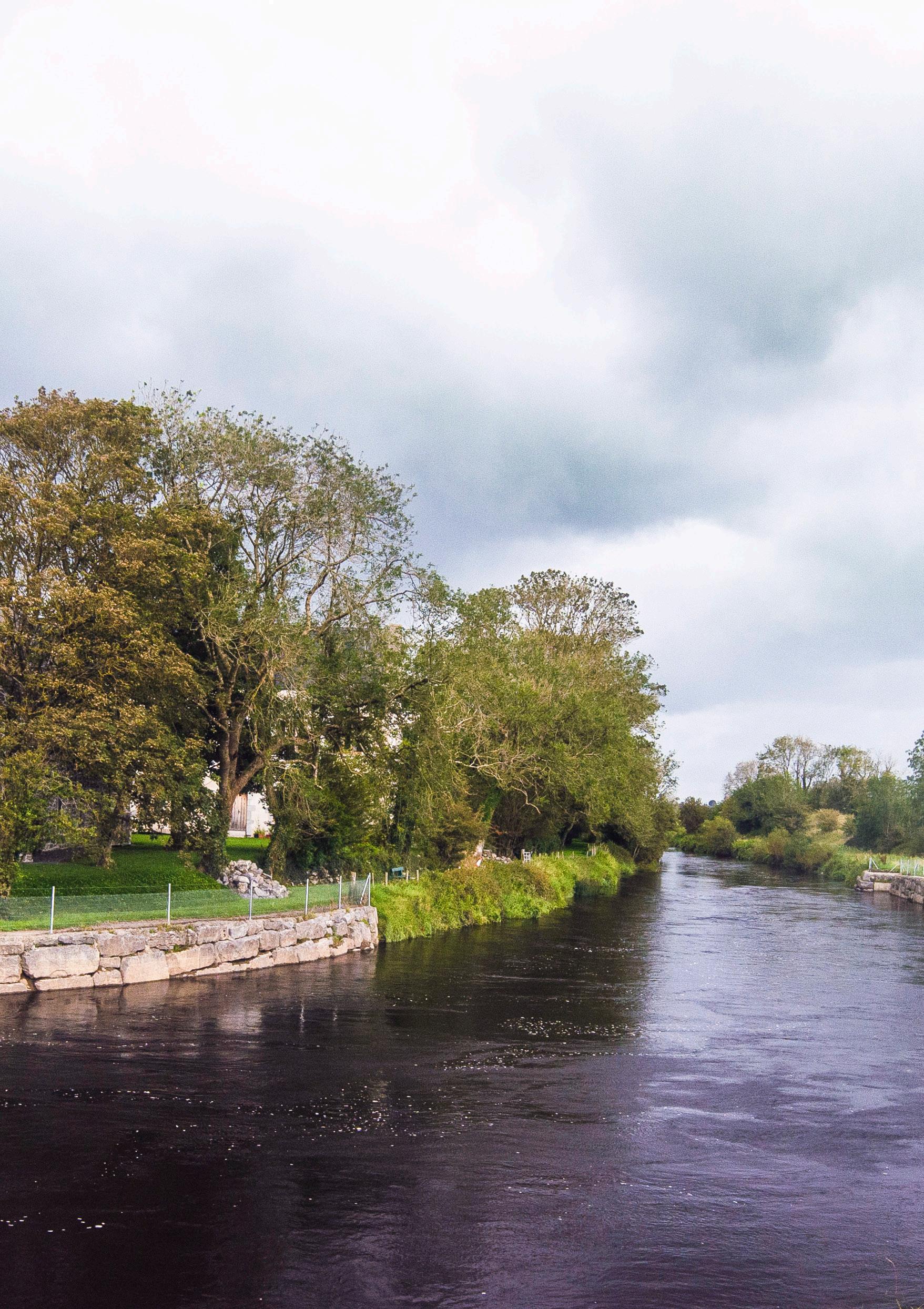
Clare River 43
22 Abbert River
Species & Season
Methods & Regulations
Permission
Fishery Description
Brown Trout: April 1st to August 31st
Salmon: April 1st to August 31st
Size Limits (Brown Trout): 13 inches (33 cm). Catch limit of 4 trout per angler per day, including only one fish over 10lbs (4.5kg).
Tuam Anglers control some fishing around the village of Abbeyknockmoy, but the rest of the river is considered free fishing, with landowner permission recommended.
The Abbert is one of the main tributaries of the Clare River and provides good fishing for trout and some salmon. It is a small river, suitable for nymphing, wet fly and dry fly, and the resident trout average less than half a pound. It gets a run of fish from Lough Corrib on summer floods, with the best fishing for these in late summer. As it is a spawning tributary, anglers are encouraged to practise catch-and-release, and the river closes at the end of August to protect these fish.

Abbert River 44
23 Grange River
Species & Season
Methods & Regulations
Permission
Fishery Description
Brown Trout: April 1st to August 31st
Salmon: April 1st to August 31st
Size Limits (Brown Trout): 13 inches (33 cm). Catch limit of 4 trout per angler per day, including only one fish over 10lbs (4.5kg).
Considered free fishing, with landowner permission recommended.
The Grange is another main tributary of the Clare River and like the Abbert provides good fishing for trout and some salmon. It is a small river, suitable for nymphing, wet fly and dry fly, and the resident trout average less than half a pound. It gets a run of fish from Lough Corrib on summer floods, with the best fishing for these in late summer. As it is a spawning tributary, anglers are encouraged to practise catch-and-release, and the river closes at the end of August to protect these fish.
24 Black River
Species & Season
Methods & Regulations
Permission
Fishery Description
Brown Trout: March 1st to September 30th
Size Limits (Brown Trout): 13 inches (33 cm). Catch limit of 4 trout per angler per day, including only one fish over 10lbs (4.5kg).
Considered free fishing, with landowner permission recommended.
The Black River is a tributary on the eastern side of Lough Corrib, draining a mainly agricultural catchment, and flowing into the lake at Ballycurrin, near Greenfields. As it drains rich agricultural land, it suffers from enrichment and excessive weed growth, and is only fishable for the first half of the season – from June on weed tends to choke most of the river channel. The river is a rich limestone stream, with plenty of fly hatches, and a good stock of brown trout, and fishes well to wet fly from March to May. As it is a spawning tributary, anglers are encouraged to practise catch-and-release.
45
25 Clarin River
Species & Season
Salmon: February 1st to September 30th
Brown Trout: February 15th to October 12th
Sea Trout: June 1st to September 30th
Methods & Regulations
Permission
Fishery Description
Size Limits (Brown Trout): 13 inches (33 cm). Catch limit of 4 trout per angler per day, including only one fish over 10lbs (4.5kg).
Fishing is regarded as free, access by landowner agreement.
The Clarin River is a small river, over 15km long but draining a relatively small catchment and therefore not a major river. It flows through limestone and can suffer low water, even running dry in places, in summer. It has a stock of wild brown trout, with the occasional salmon and sea trout, although it is closed for salmon fishing. Nymphing is probably the most productive method for trout, with a light rod.
26 Dunkellin River
Species & Season
Methods & Regulations
Permission
Fishery Description
Salmon: February 1st to September 30th
Brown Trout: February 15th to October 12th
Sea Trout: June 1st to September 30th
Size Limits (trout): 12 inches / 30.5 cm
Fishing rights are mostly unknown and assumed to be held by landowners. Permits are not available and fishing access is by agreement with landowners. The State controls a stretch of ~600m in the lower reaches, but a permit is not currently required.
The Dunkellin River drains a substantial catchment in south and east Galway, including Loughrea Lake in the upper reaches. The river itself flows through an agricultural area, and has become somewhat enriched in recent years. The Dunkellin gets a run of spring salmon and grilse, although numbers have declined, and the system is currently closed for salmon fishing. Sea trout also run the river, and are mainly targeted in the lower reaches and the estuary, where some good fish are taken every year. Note: All sea trout must be released alive.
46 46
27 Lough Rea
Species & Season
Methods & Regulations
Permission
Fishery Description
Brown Trout: March 17th to September 30th
Size Limits: 12 inches / 30.5 cm
The lake is managed on a long-term lease by Loughrea Anglers Association and fishing is by permission only. No outside boats may be launched on the lake. A club boat is available for visiting anglers. Contact details are available locally.
Lough Rea, or Loughrea Lake, is a rich limestone lake that borders the southern side of Loughrea Town. It is a reasonably large lake, approx. 2.5km long and up to 1km wide. Although natural spawning is limited, the lake has a very good stock of wild brown trout, averaging 0.5-1lbs but with a lot of fish in the 2-3lbs bracket. It gets large hatches of insects, particularly duckfly, sedge and buzzers, and produces excellent sport to wet and dry fly. No salmon or sea trout migrate this far upstream.
From early season fishing can be good on buzzer, duckfly and olive patterns. During the summer the best fishing is in the evening, often into dark, with great hatches of buzzer. Late season sees sedge hatches increase, and fishing wet and dry sedge patterns can be very productive. Dapping terrestrials like a daddy-long-legs also works very well.
28 Gort River
Species & Season
Methods & Regulations
Permission
Fishery Description
Brown Trout: March 1st to September 30th
All legal methods.
Permission not required, landowner permission recommended to cross private land.
The Gort River is one of the features of a very interesting geological landscape in south Galway. The limestone rock in the area is home to myriad caves, swallow holes and underground rivers, and indeed the Gort River disappears underground a couple of times along its course. It eventually flows into Coole Lake, and from there flows underground until it enters the sea at Kinvara.
The limestone geology means the river has high alkalinity, and this results in very high productivity. There are good hatches of aquatic insects, particularly mayfly. The river was known to hold a good stock of trout averaging 0.5lbs with some better fish to 2lbs+, but in recent years pike have become more widespread in the catchment. Early season is best as it gets low and weeded in summer.
47
29 Woodford River
Species & Season Brown Trout: March 17th to September 30th
Methods & Regulations
Permission
Fishery Description
All legal methods
Permission not required, landowner permission recommended to cross private land.
The Woodford River is a small river that rises in the Slieve Aughty mountains in south east Galway, and flows eastward for approx. 15km to Lough Derg. Although the river is known to have a good stock of wild brown trout, it is heavily overgrown and little fished except with a worm. Possibly getting in and wading with a small nymphing rod would be successful.
30
Species & Season Brown Trout: March 17th to September 30th
Methods & Regulations
Permission
Fishery Description
All legal methods
Permission not required, landowner permission recommended to cross private land.
This river joins the Kilcrow River 1km upstream of Lough Derg. The Cappagh/Duniry branch holds a good stock of trout up to 1lb, and is lightly fished. The best fishing is reputed to be between Cappagh Bridge and Duniry.
The Kilcrow River also holds good stocks of trout, with the best fishing from Oxgrove Bridge downstream. Both rivers are drained and channelised, with slow-flowing sections, and consequently suffer from low water and weed growth in summer. Best fishing is early season.
Cappagh/Duniry-Kilcrow River
48
31 River Suck
Species & Season
Methods & Regulations
Permission
Fishery Description
Brown Trout: March 1st to September 30th

All legal methods. Minimum size: 10 inches (25.4cm)
A Midland Fisheries permit is required to fish the River Suck and tributaries.
The Suck is a large tributary of the mighty River Shannon and forms the border between Counties Galway and Roscommon. In the middle to lower reaches it is best known as a pike and coarse fishery, with specimen pike regularly recorded. However, trout fishing is practised on a short stretch above Ballymoe and again, further upstream, around Castlerea in Co. Roscommon.
49
32 Bunowen River
Species & Season
Brown Trout: March 1st to September 30th
Methods & Regulations All legal methods. Minimum size: 10 inches (25.4cm)
Permission
Fishery Description
A Midland Fisheries permit is required to fish the Bunowen River.
The Bunowen River rises near Caltragh and flows through the village of Ahascragh to join the River Suck near Ballinasloe. This was formerly renowned for trout fishing, with great hatches of fly and stocks of trout, however drainage schemes in recent decades have reduced the river to a shadow of its former glory. There is still good trout fishing from half a mile upstream of Clonpee Bridge and downstream around Ahascragh, with fish averaging 0.75lbs. The best fishing is early in the season, and the river can get very low and weeded up in summer time.
33 River Shiven
Species & Season
Methods & Regulations
Permission
Fishery Description
Brown Trout: March 1st to September 30th
All legal methods. Minimum size: 10 inches (25.4cm)
A Midland Fisheries permit is required to fish the River Shiven.
The Shiven, or Castlegar River as it is known in the upper reaches, rises upstream of Mountbellew in East Galway and flows to join the River Suck near Ballyforan. It drains a limestone catchment and was formerly a very productive trout fishery, but the drainage schemes of recent decades results in very low flows in summer now. The best fishing is early in the season, or on a summer flood, and the trout average 0.5 - 0.75lbs.
50
34 Island River
Species & Season
Methods & Regulations
Permission
Fishery Description
Brown Trout: March 1st to September 30th
All legal methods. Minimum size: 10 inches (25.4cm)
A Midland Fisheries permit is required to fish the River Shiven.
The Island River is a small tributary of the Suck, which flows for a few kilometres to the Suck near Ballymoe. For much of its length it is deep and slow flowing, and although it does have a stock of trout, access is difficult. Heavy weed growth in summer means the best fishing is early in the season.
51
52
At IFI, we regularly produce angling guides and we are always looking for ways to improve the quality of our publications. It is always helpful to receive feedback from readers on their experience of our publications and on how we might improve them in the future. If you have any feedback or comments on this angling guide we would appreciate if you could send those comments to: publications@fisheriesireland.ie
© Published by Inland Fisheries Ireland 2020, P/N: IFI/2019/1-0451 - 008
Photos courtesy of Failte Ireland, Gardiner Mitchell, Kevin Crowley, Mark Francis, Paul O’Reilly, Shane O’Reilly & Myles Kelly.
The document includes Ordnance Survey Ireland data reproduced under OSi Copyright Permit No. MP 007508. Unauthorised reproduction infringes Ordnance Survey Ireland and Government of Ireland copyright. © Ordnance Survey Ireland.
This brochure can be made available in alternate formats upon request.
Feedback
For up to date information on fishing in Ireland log onto: www.fishinginireland.info or send an email to: anglingqueries@fisheriesireland.ie
Follow us on Facebook and Twitter: www.facebook.com/fishinginireland @AnglingUpdate





For up to date information on fishing in Ireland log onto: www.fishinginireland.info or send an email to: anglingqueries@fisheriesireland.ie
on Facebook and Twitter: www.facebook.com/fishinginireland @AnglingUpdate
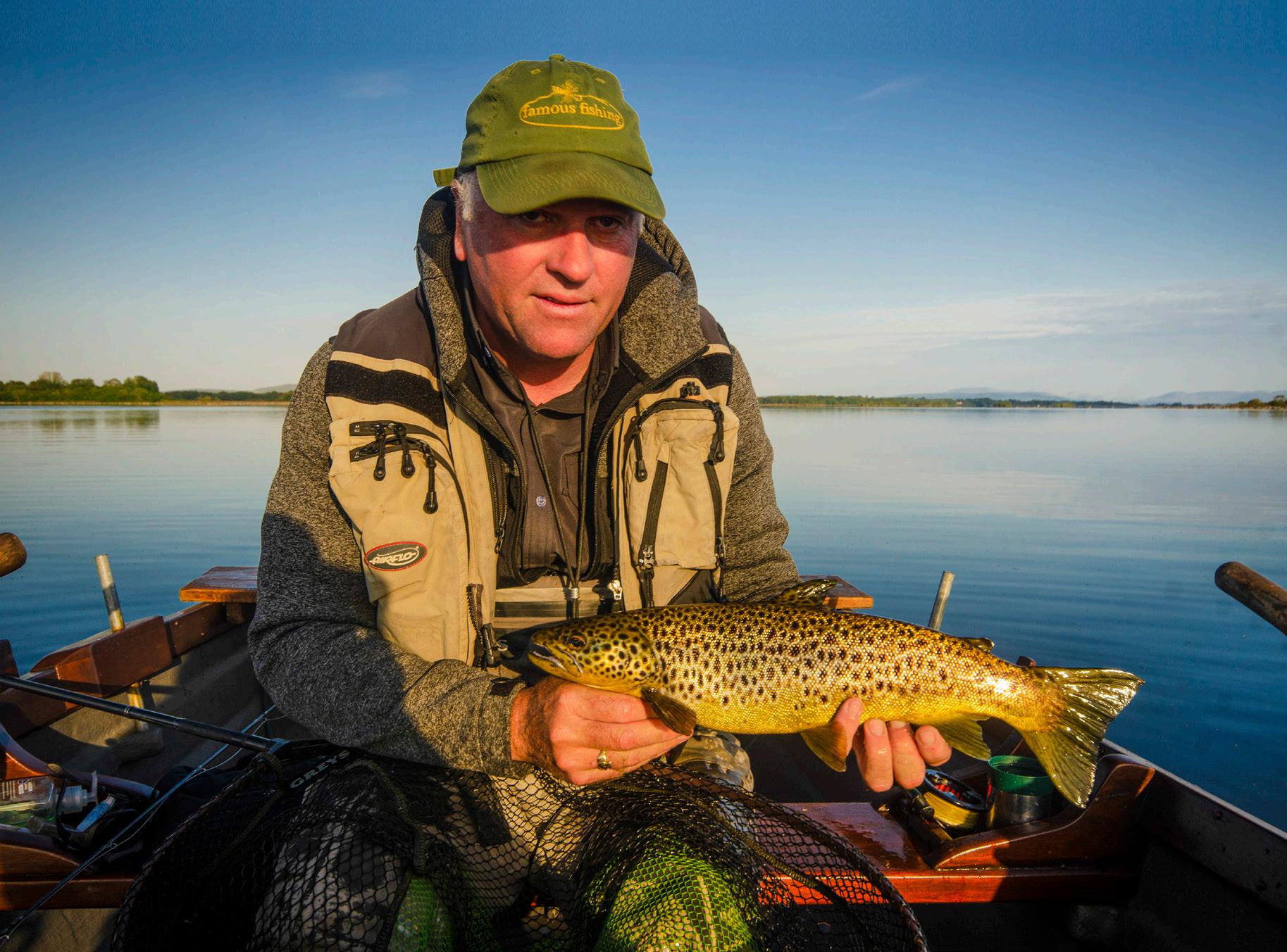
Inland Fisheries Ireland Galway, Teach Breac, Earl’s Island, Galway. H91 E2A2 Email: galway@fisheriesireland.ie Tel: +353 (0)91 563118 Fax: +353 (0)91 566335
Follow us



